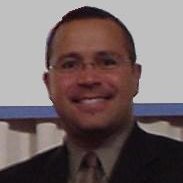
Alex Ricardo ’92
Our first Alumni Spotlight features Alex Ricardo ’92.
Alex Ricardo, Γ1086
Conducted 4/3/2015
Background
- Hometown: Freehold, NJ
- Current Town: Nutley, NJ
- Major in College: Materials Engineering
- Graduation Year: 1992
- Current Job: Work in Cyber/Privacy Liability division for Lloyd’s of London, specifically dealing with risk crisis management for data breaches.
Experience with Theta Xi
Question: When did you begin to come around the chapter house? What brought you there?
AR: I came around the house as a freshman in 1987. I had a bunch of friends in my freshman dorm (I lived in Davis Hall at the time) that started hanging around TX. There was a 4-6 week rush period at the start of the semester that went until mid-October and then there was “big night”, so we were able to join our first semester as freshmen.
Question: Why did you end up deciding to join Theta Xi?
AR: Mainly because of Tim Konek, Γ1076. We became friends and he brought us around the house.
Question: What did you like most about the house back then?
AR: The Brothers were great: they were friendly, there was camaraderie. Also, the house itself was just impressive, physically. Having a group of friends from freshman year joining with me also made it a great experience.
Question: What do you think has changed the most about Gamma chapter since you’ve become an alumnus?
AR: I think the undergraduate population, in general, is more mature. People are joining fraternities with a greater sense of responsibility and students are weighing things more as far as which house to join. When I was an undergrad, a lot of it was about going to parties for kegs and joining houses based on those parties. Undergrads are now viewing fraternities as more than just parties.
Interest in Theta Xi History
Question: What sparked your interest in the history of Gamma chapter and Theta Xi as a whole?
AR: Being an associate member and learning the history of the fraternity during that process sparked my interest. I was in awe about how a fraternity could be founded; what was going through the minds of the 8 founders? What inspired them? Exposure to the ritual also increased my interest. Imagine 8 undergrads coming up with all the tenants we live by. How did they come up with all of that? Then I started wondering if anyone had bothered to find out exactly where the fraternity was founded? If anyone had paid tribute to our founders and discovered their burial sites. No one knew the answers to these questions and everything started to snowball. I became more involved with headquarters and I started doing more and more research. In fact, up until 1990 no one even had a photo of Brother Brainerd. I wrote countless letters, made phone calls, dealt with the US census bureau, and I eventually found the photo, and became the youngest Theta Xi to earn the Distinguished Service Award. I also provided additional historical findings in the years leading up to the 150th convention to Brother Gregg Spitzer (ΓM 6), including the location of the remains of Brother Buel. My involvement with building the history and aiding Brother Spitzer in obtaining possession of Brother Buel’s remains earned me a second Distinguished Service Award at the 150th Anniversary convention.
Question: What is the coolest TX artifact you have in your collection?
AR: I have an invitation from the 32nd anniversary convention from back in 1896 as well as a few old Quests – 6 or 7 different versions. I have a teacup and saucer from Beta chapter. But the coolest thing I have in my collection is the fraternity badge from Gamma 138.
Question: What is the most interesting piece of information you have discovered in your research?
AR: Finding the remains of Brother Buel, for sure. I found his obituary in The New York Times. From the obituary, I was able to identify that he never married and lived in NYC. I also found the funeral home that put Buel to rest. The funeral home was then able to tell us the history of Buel’s disposition. He had no next of kin, so they sent him to be cremated at the only crematory in the NYC area at the time, which was out in Linden, NJ. After contacting the crematory, I found that Buel was still at the crematory, stored in a coffee can in their basement! But in order for the crematory to release the cremains to me, I had to find a next of kin to sign a release form. This is where Brother Spitzer stepped in and was able to track down Buel’s closest living relative. Both of us had the cremains released to us 101 years to the day of his death. Brother Spitzer currently possesses the cremains and we both had his cremains present at the 150th Annual National Convention Ritual meeting where he was recognized at role call! It was certainly an amazing experience. Currently, legal paperwork is being done to transfer Brother Buel’s cremains to National Headquarters.
Question: What do you think are the biggest differences between fraternities in the late 19th century and fraternities now?
AR: Fraternities started in the late 18th century so that people could congregate secretly and discuss political matters. During the Revolutionary War, groups with nonconventional ideas needed to discuss things behind closed doors. They used fraternities as a medium to discuss shared values and topics on which they had common ground. They [fraternities] were a medium that provided common folk with comradery and communion. People still use fraternities for these purposes today. These groups often times started in universities as 18, 19, and 20 year olds were rebelling against older generations and sought open discussions. I think it really has been full-circle; intellectual bonds over bonds of beer.
